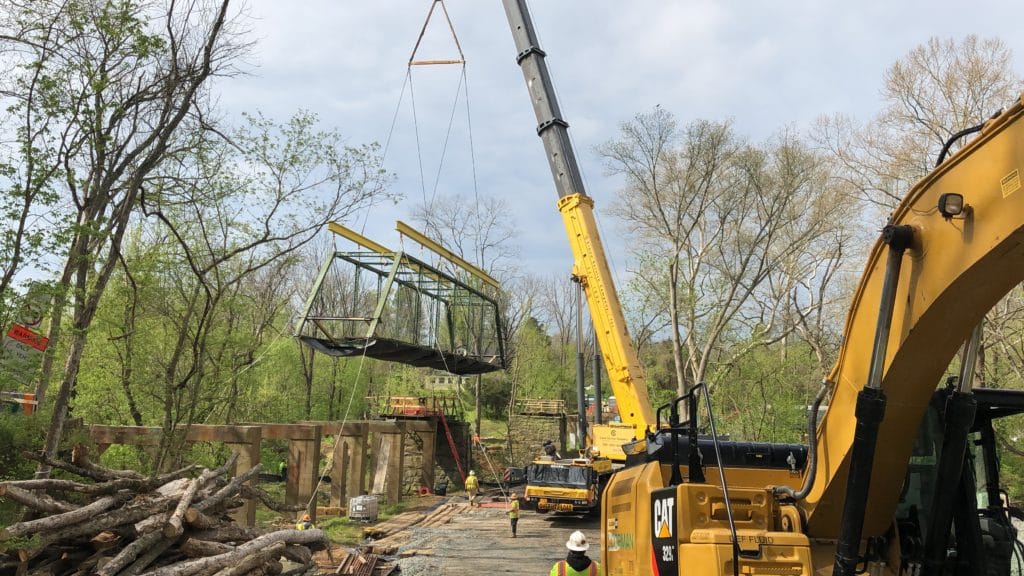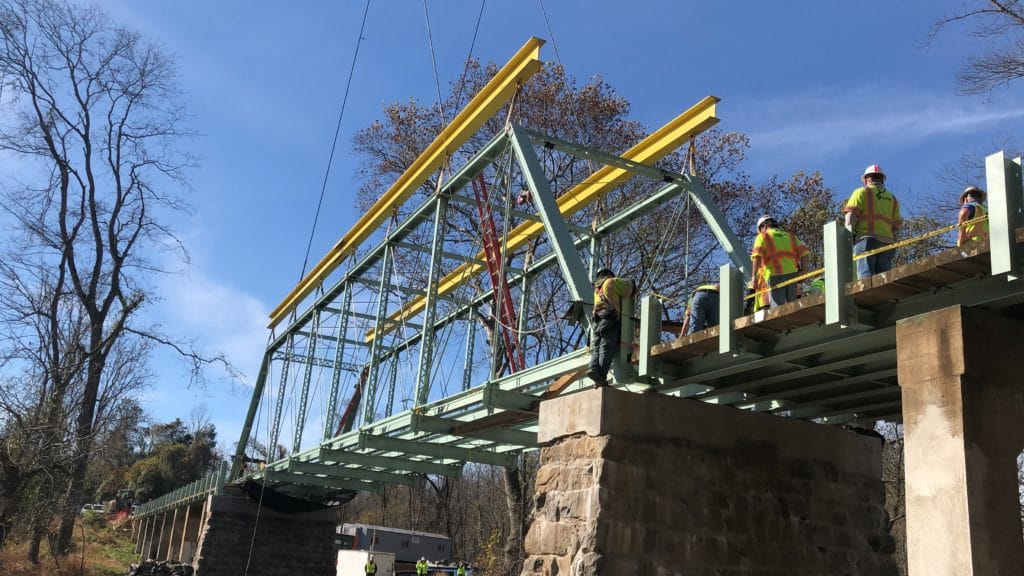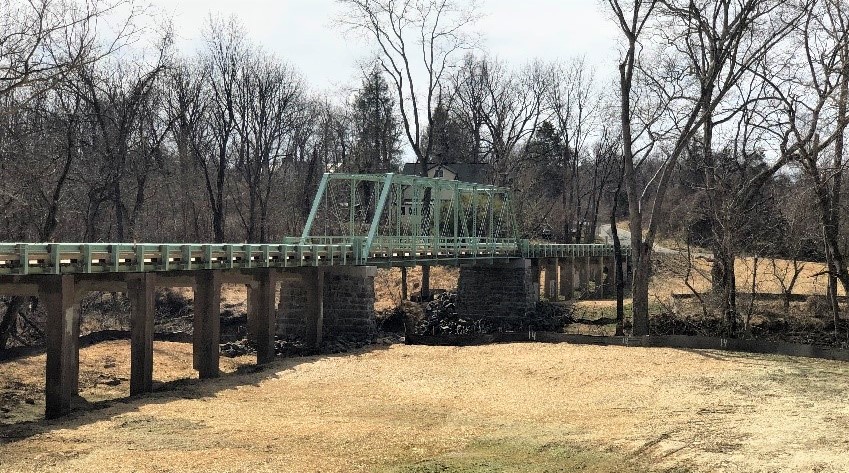The Waterloo Bridge is located on the Fauquier/Culpeper county line in Virginia—roughly 60 miles due west of Alexandria—and carries Route 613 over the Rappahannock River. The bridge was built in 1879 and is eligible to be listed on the National Register of Historic Places.
In 2014, a Volkert bridge inspection team’s inspection of the 366-foot-long, one-lane bridge found significant deterioration that was rapidly increasing. Based on the inspection findings and the results of an emergency load rating by Volkert engineers, the bridge was closed to traffic on January 15, 2014.
Prior to its closure, the Waterloo Bridge carried 630 vehicles per day and was the oldest surviving metal truss bridge in service in Virginia.

Above: Photos from 2013 show the bridge prior to restoration.
Determining the bridge’s future
Based on Volkert’s previous experience with truss restoration projects, the Virginia Department of Transportation (VDOT) selected the firm to provide engineering services for the project.
In early 2015, Volkert submitted a conceptual bridge study to help determine the future of the bridge. The study included alternative designs for restoration; multiple load rating options; shared use path possibilities; utility relocation, environmental, and hydrologic and hydraulic challenges; and construction considerations.
Volkert worked with VDOT, Culpeper and Fauquier Counties, and other stakeholders to determine the future of the Waterloo Bridge. Based on feedback from the local community, VDOT determined that the bridge would be restored and secured the required $3.65 million for restoration.
Restoring the historic bridge
Construction began in early 2020. Volkert’s design included intricate procedures for removing the 100-foot-long wrought iron truss and replacing various wrought iron members. “The project’s most significant challenge was developing a method of safely removing the truss and supporting it during member replacement,” explains Volkert project manager Brian Graham. “Because there were no original bridge plans, all of the details developed for the restoration plans were developed from field measurements taken by our lead structural engineer David Simons and the rest of the Volkert structural design team.”
The contractors cleared a staging area along the Fauquier County side of the river to place the original truss for restoration. On April 29, 2020, the 62,101-pound truss was successfully lifted and moved to the staging area.

Above: The original truss is moved by crane to the staging area.
The truss was carefully disassembled and blast cleaned. Volkert engineers inspected each member to determine which needed replacement or strengthening. The truss was then carefully reassembled, using modern materials and a design to increase its load capacity.
In addition to restoring the truss, Volkert’s plan called for rehabilitation of the original stone masonry truss piers. Scour protection was installed around the piers to prevent erosion.
The bridge’s 15 concrete approach span piers were also repaired, and the steel beam timber deck approach spans were replaced.
All new materials were designed to replicate the original appearance of the bridge to preserve its existing character, including the vintage green paint color.
On November 5, 2020, the freshly painted truss was put back in place on the rehabilitated stone truss piers.

Above: Placing the restored truss back on the piers.
Open for traffic
The Waterloo Bridge restoration project was officially completed on February 23, 2021—two months ahead of schedule. Vehicles once again traveled across the bridge for the first time in seven years.
“We were honored to help VDOT complete this project,” continues Graham. “To be able to restore a historic structure that means so much to the community was a great experience.”

Above: The restored bridge in February 2021.

